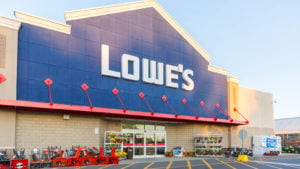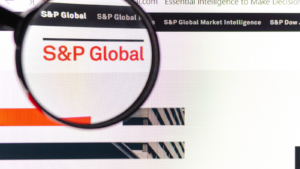Of the 500 stocks listed in the benchmark S&P 500 index, only 51 (10%) are considered dividend kings and have increased their dividend payout to stockholders for 50 consecutive years or longer. Dividend kings are often stocks of long-established blue-chip companies that have prioritized returning capital to their shareholders through consistent dividend payments. These companies have raised their dividend payments through stock market crashes, wars and economic recessions.
Because companies either scale back their dividends or cut them altogether, dividend kings are especially rare these days. For investors, taking a position in a dividend king can help grow and support a healthy portfolio long-term and provide regular income. Here are seven dividend kings to buy for royal returns.
Walmart (WMT)

Retail giant Walmart (NYSE:WMT) paid its first dividend in 1974. The initial dividend payout was 5 cents a share. The company has faithfully raised its dividend each year since, reaching the 50 consecutive milestone earlier in 2023 and becoming one of the newest dividend kings in the S&P 500. Today, Walmart pays a quarterly dividend of 57 cents per share, giving it a yield of 1.43%. The company has prioritized the dividend no matter what happens with its business internally or externally.
Today, Walmart remains a force in retail due to its growing focus on grocery sales and its strength in online sales channels. In August of this year, the company reported second-quarter earnings of $1.84 a share compared to $1.71 expected on Wall Street. Revenue from April through June amounted to $161.63 billion compared to $160.27 billion, which was the consensus expectation of analysts. Grocery sales and e-commerce sales powered these results, which rose 24% from a year earlier.
WMT stock is up 20% over the last 12 months.
Lowe’s (LOW)

Home improvement retailer Lowe’s (NYSE:LOW) has consistently raised its cash dividend every year since the company went public in 1961. Today, Lowe’s pays shareholders a quarterly dividend of $1.10 per share for a yield of 2.23%. LOW stock is more sensitive than most to economic cycles, especially the housing market and downturns in home improvement projects. Yet the company has consistently grown its earnings and kept its dividend payouts climbing higher.
In August, Lowe’s reported mixed Q2 financial results but retained its full-year guidance. Facing headwinds from a volatile housing sector, Lowe’s reported Q2 EPS of $4.56 versus $4.49 that had been forecast on Wall Street. Revenue in the quarter totaled $24.96 billion compared to the $24.99 billion that analysts anticipated. Looking ahead, the company maintained its full-year forecast, anticipating revenue between $87 billion and $89 billion and EPS of $13.20 to $13.60.
LOW stock is largely flat over the last 12 months (up 2%). But over five years, the company’s share price has nearly doubled.
Kimberly-Clark (KMB)

Personal care company Kimberly-Clark (NYSE:KMB), maker of Huggies diapers and Kleenex tissue paper, has reliably increased its dividend payment to shareholders for 51 years. The company currently pays a quarterly dividend payment of $1.18 per share for a yield of just under 4%. The share price is up only 5% in the last 12 months and has increased only 9% over five years, making the dividend payment an important part of shareholder compensation from the stock.
Kimberly-Clark spends more than $1 billion each year advertising its various products, which helps give it a competitive edge in the marketplace. The company also focuses on keeping costs low, which enables it to remain highly profitable in good and bad economic times. The company has reported mixed financial results lately, with its profits struggling as consumers cut back on spending or look for cheaper, off-label versions of products. Still, the company’s commitment to its dividend is impressive.
PepsiCo (PEP)

Another relatively new addition to the dividend king club is PepsiCo (NASDAQ:PEP). Formed in 1965 through the merger of Pepsi-Cola and Frito-Lay, PepsiCo has paid a quarterly dividend since March 30, 1973, and raised it every year. Since 2010, on average, PepsiCo has increased its dividend by 8% per year. Today, the company pays a quarterly dividend to stockholders of $1.26 per share, giving it a yield of 3.20% based on the current share price.
The dividend at PepsiCo looks secure based on the company’s continued strong financial results. With its just-released Q3 print, PepsiCo announced EPS of $2.24 on revenue of $23.45 billion. Analysts had expected a profit of $2.15 per share and revenue of $23.41 billion. The company expects its profits to rise 13% this year and its revenue to grow 10%. PEP stock has fallen sharply in recent weeks on fears that weight loss drugs will hurt its sales. Down 12% on the year, now is an ideal time to buy PepsiCo stock.
Illinois Tool Works (ITW)

Since its founding in 1902, Illinois Tool Works (NYSE:ITW) has made essential products that help with construction and industrial output. This includes manufacturing everything from nail guns and welding torches to fasteners such as screws, bolts and nuts, and powertrain components for cars and other vehicles. Illinois Tool Works currently has 45,000 employees and generates nearly $16 billion in annual revenue.
ITW stock is also a dividend king, having increased its payment to shareholders for 59 consecutive years. The dividend payout is currently $1.40 per share, giving it a yield of 2.40%. Like many of the other companies on this list, Illinois Tool Works is committed to buying back stock, announcing plans to repurchase $1.5 billion of its own shares in 2023. The stock has been a good performer, delivering a 23% gain over the last year and 84% through five years.
AbbVie (ABBV)

AbbVie (NYSE:ABBV) has struggled this year since losing its exclusive patent protection on the bestselling drug Humiras used to treat inflammatory conditions such as rheumatoid arthritis and psoriasis. ABBV stock is down nearly 10% year-to-date. However, the company has a drug pipeline and is focusing more on driving sales of its other mediations, namely Skyrizi for psoriasis treatments and Rinvoq for various autoimmune diseases.
AbbVie also pays a strong quarterly dividend of $1.48 for a yield of 3.99%. The company is a much-celebrated dividend king with 50 years of consistent increases to its shareholder payouts. Over the last decade, AbbVie has grown its dividend by 270% on a cumulative basis. While ABBV stock might be struggling now, it is likely only a matter of time before the company finds a replacement for Humira, which was once the world’s top-selling medication.
S&P Global (SPGI)

S&P Global (NYSE:SPGI) offers financial services to the global capital and commodity markets, including credit ratings, analytics and other data. The company also manages several stock indices, such as the benchmark S&P 500 index. S&P Global has paid a dividend every year since 1937 and has raised its dividend for 50 consecutive years. The company most recently raised its dividend by 6.4% in January of this year.
S&P Global benefits from having a big moat around its business. This stems from the fact that S&P Global is one of only three major credit rating agencies in the U.S. that control over 90% of global financial debt ratings. In addition to its strong dividend, S&P Global is committed to buying back its stock. Over the last nine years, S&P Global has reduced its outstanding share count by 1.5% annually. SPGI stock has had a strong run, having risen 25% in the last 12 months and 94% over five years.
On the date of publication, Joel Baglole did not have (either directly or indirectly) any positions in the securities mentioned in this article. The opinions expressed in this article are those of the writer, subject to the InvestorPlace.com Publishing Guidelines.
